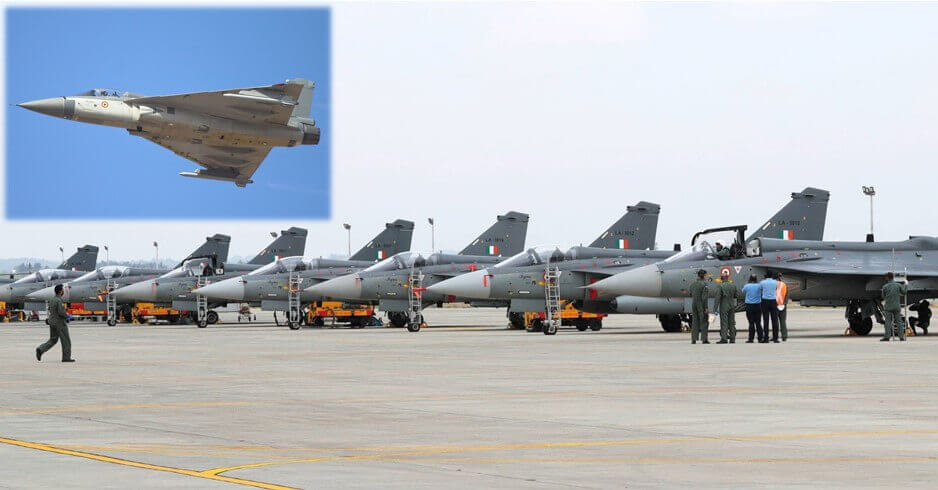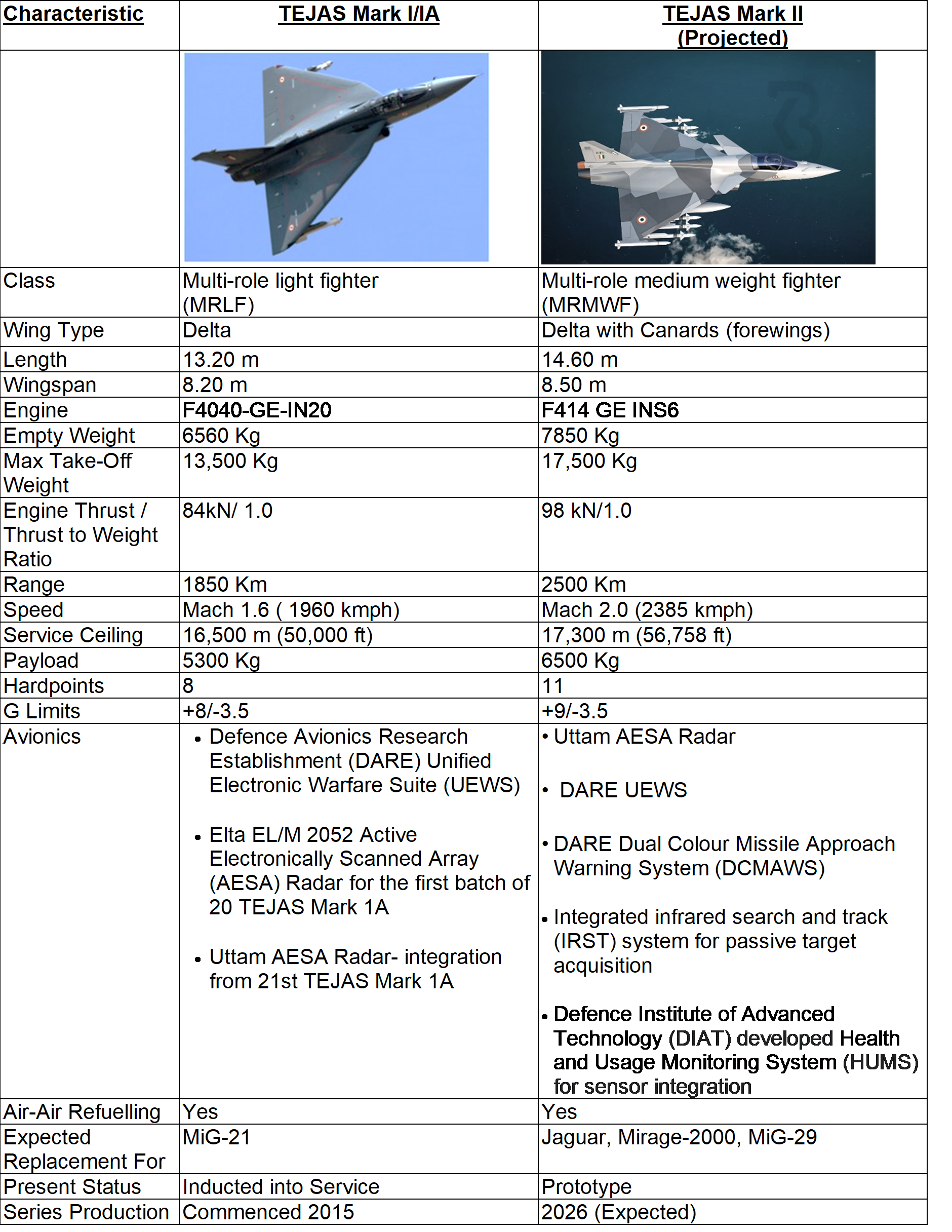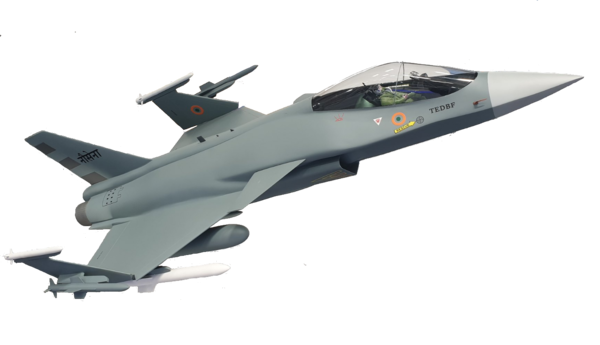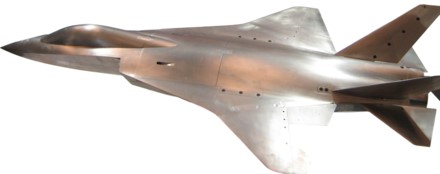
LCA TEJAS: Ready To Touch The Skies With Glory
Mon, 30 Aug 2021 | Reading Time: 8 minutes

Hindustan Aeronautics Limited (HAL) has this month placed an order worth Rs. 5375 Crores with General Electric (GE) Aviation, US for supply of 99 F404-GE-IN20 engines for the TEJAS Light Combat Aircraft (LCA), in support of the ‘firm’ contract for 123 LCA to the Indian Air Force (IAF), in the wake of the present shortfall of fighter squadrons (31 available, as against 42 required to fight a two-front war). In a demonstration of the IAF’s confidence in the LCA, the Chief of Air Staff flew a TEJAS Mark I LCA in Final Operational Clearance (FOC) configuration on 25 August, during his visit to HAL. The IAF has in principle decided to raise 18 TEJAS squadrons (324 aircraft), with future version(s) expected to fulfil IAF’s quest for a frontline Medium Multi-Role, Combat Aircraft (MMRCA).
These welcome developments are encouraging but is the LCA an answer to the IAF’s operational needs? In order to arrive at an informed opinion, it is necessary to map the contours of the LCA Program and critically evaluate the global standing of this indigenous fighter aircraft.
The TEJAS LCA Program
TEJAS LCA is a fourth-generation fighter aircraft and incorporates all three self- reliance goals set out for the TEJAS– a fly-by-wire (FBW) control system, multi-mode radar (MMR) and an afterburning turbofan engine (ATE), in addition to digital avionics and a composite material structure. The LCA is the smallest and lightest supersonic fighter aircraft in its class, with 70% indigenous components, a credit to the Domestic Aerospace Industry (DAI)!
The birth of the LCA Program began in the early 1980s, when the IAF identified the two-fold need to develop an aircraft to replace the ageing MiG-21 Fighter and to act as a platform for advancement of the domestic aerospace industry. This led to the development of the Aeronautical Development Agency (ADA), with HAL being the principal contractor. The TEJAS design and development is jointly managed by ADA and HAL’s Aircraft Research and Design Centre (ARDC). The LCA design was finalised in 1990 and development was planned in two phases- Phase 1 comprised the design, development and testing of two technology demonstrator aircraft (TD-1&2). This was followed by the production of two prototypes (PV-1 &2). Phase 2 involved manufacture of three more prototypes (production/Naval/Trainer variants). Development of TD-1/2 was completed in 1995/1998 respectively. This was followed by 8 Limited Series Production (LSP) aircraft developed between April 2007 and March 2013, as precursors to series production (SP) aircraft.
One of the most ambitious requirements for the LCA was the specification that it would have “relaxed static stability” (RSS). Aircrafts with RSS technology are inherently unstable, which greatly enhances in-flight manoeuvrability. However, these machines require digital flight controls, without which pilot fatigue is of an unacceptably high order. The LCA incorporates both these technologies. The FBW System was successfully developed by the National Aeronautics Laboratory (NAL), resulting in maiden flight of TD-1 on 04 January 2001, followed by successful supersonic flight on 01 August 2003. Meanwhile, TD-2 made its first flight on 06 June 2002 with the automatic flight control system (AFCS).
The LCA was given the moniker of TEJAS (Sanskrit for Radiance) in 2003 by then Prime Minister Atal Bihari Vajpayee.
The other milestone for indigenous development was the MMR, planned for joint development by HAL and DRDO’s Electronics and Radar Development Establishment (LRDE). However, technological hurdles inclined the developers to incorporate an available radar from a foreign OEM. Accordingly, the Israeli ELTA EL/M-2032 multi-mode fire control radar (FCR) was tested in April 2010 and is being used in the first batch of 40 TEJAS Mark I. Subsequently, the EL/M-2052 Active Electronically Scanned Array (AESA) Radar was developed jointly by ELTA Systems Ltd, Israel and HAL and is being used for the first 20 TEJAS Mark IA. The fully indigenous Uttam AESA Radar will mount the remaining 63 aircraft of the second contract for 83 aircraft. This radar is capable of multi-target tracking (upto 100 targets) at a maximum range of 150 km for a target with 2m2 radar cross-section (RCS) and prioritised target engagement. As a point of interest, the F-16C has a RCS of 1.2 m2 while the JF-17 has a RCS of 3.5 m2. The TEJAS is reported to have a 0.5 m2 RCS, mainly due to composite material structure, making its detection at BVR ranges substantially difficult!
Development of an indigenous propulsion unit for the TEJAS was another important self- reliance goal. Accordingly, DRDO’s Gas Turbine Research Establishment (GTRE) was nominated in the late 1980s for indigenous design/development of the GTX-35VS ATE (Kaveri). The Kaveri was expected to replace the F404 ATE for SP aircraft but is still plagued by the inability to develop the desired thrust of 90- 95 kN required for the LCA. Subsequently, in 2004, GE was awarded a contract for 17 upgraded F404-GE-IN20 ATE to power eight IAF and two Naval prototypes. In 2008, 24 F404-IN20 upgraded ATE were ordered for the first TEJAS Mark I squadron of the IAF, with the latest order for 99 GE ATE being inked this month as above.
The initial contract worth Rs 2,813 Crores for 20 TEJAS Mark I LCA (16 fighter aircraft and 4 trainer aircraft) for the first IAF squadron in IOC (flight ready) configuration (TEJAS-IOC) was signed in March 2006. Post trials, IOC was accorded on 10 January 2011. Commencement of SP concurrently led to raising of the first TEJAS squadron at Bengaluru in July 2016, wherein initially two and later three MiG 21 Aircraft of 45 Squadron were replaced with the TEJAS-IOC. TEJAS-IOC are equipped with Air-to-Air Missiles (AAM), helmet mounted sights and laser guided bombs. The Squadron now has 16 TEJAS-IOC. These aircraft will subsequently have to be raised to FOC configuration by HAL.
While the second contract for another 20 (16+4) LCA Mark I in FOC (combat ready) configuration (TEJAS-FOC) for the second IAF squadron worth Rs. 5,989 Crores was signed in December 2010, the FOC configuration was delayed due to a multitude of reasons which plagued the Program. In order to facilitate production and induction, an interim IOC-II was accorded to the LCA in January 2015, allowing it to commence service with the IAF.
As a push towards achieving FOC, a Derby Beyond Visual Range (BVR) AAM was test-fired from a LCA on 12 May 2017 and achieved a hit on a moving target. This catalysed the induction process and by November 2017, HAL delivered five IOC-II to the IAF. As a further effort towards achieving FOC, mid-air refuelling (MAR) trials were successfully completed in September 2018. The FOC was formally awarded on 20 February 2019. Production of the first TEJAS-FOC with BVR AAM and MAR led to equipping of the resurrected 18 Squadron at Sulur on 27 May 2020, with the first two SP TEJAS-FOC.
The contract for 73 TEJAS LCA Mark IA Fighter Aircraft and 10 Twin Seat Trainer Aircraft incorporating more than 40 design improvements over Mark I (including a new avionics package and an expanded weapons suite consisting of DRDO’s Astra BVR AAM and UK’s Advanced Short Range AAM ) worth Rs. 48,000 Crores was finally inked with HAL post clearance by the Cabinet Committee on Security (CCS) during Aero India 2021 in February. Contract conclusion by the end of the decade would raise the IAF’s fighter squadron fleet by six squadrons, including the above. To HAL, this means delivery of 105 out of a total of 123 aircraft (18 LCA in IOC/ FOC configuration having already been delivered to the two IAF TEJAS squadrons). By the time delivery of these 123 aircraft are completed, TEJAS LCA Mark II with structural improvements is expected to be ready for SP and delivery. This variant will incorporate 5th Generation Fighter Aircraft (FGFA) technology which would subsequently flow into the Advanced Medium Combat Aircraft (AMCA) FGFA Program. Comparison of characteristics of these variants are in the table below.

TEJAS LCA Naval Variant
The Naval LCA Program for an envisaged requirement of 50 aircraft commenced in 2003 in the wake of the successful supersonic flight test of the Air Force variant. However, the Indian Navy (IN) opted out of the LCA Program in December 2016, with concerns over excessive weight. The IN then issued a fresh Request for Information (RFI) for 57 Multi- Role Carrier Borne Fighters (MRCBF). In April 2020 ADA/DRDO announced work on a noveau design in response to this RFI. The noveau design Twin Engine Deck Based Fighter (TEDBF) was unveiled at Aero-India 2021. Maiden flight is expected by 2026, with induction to commence in the beginning of the next decade.

TEDBF: Source- Wikipedia
AMCA
The objective of the AMCA Program is to develop a FGFA for the IAF and the IN. Designed by the ADA, the project is likely to evolve as a joint public-private partnership venture between HAL and a private vendor, with an aim towards commencement of production by 2028. The AMCA is slated to be a stealth, all-weather, multi-role fighter aircraft with advanced avionics and Artificial Intelligence (AI) controlled MSDF capabilities. The initial aircraft will be powered by GE’s F-414 ATE, identified for the Mark II variant and later expected to be replaced by an indigenous engine. There are also plans to equip the AMCA with Directed Energy Weapons (DEW), a sixth generation characteristic, which have been described in detail @ Chanakya Forum https://chanakyaforum.com/directed-energy-weapons1/.

Wind-tunnel Model of AMCA: Source- Wikipedia
Comparison of TEJAS LCA Against Regional Competition
In the regional scan, the F-16 Block Fighter Aircraft is in use with the Pakistan Air Force (PAF) and certain ASEAN countries, while the JF-17 is in use with the Chinese PLAAF, the Myanmar Air Force and the PAF.
While the F-16 outpaces the TEJAS in engine thrust, speed and operational range, the TEJAS leads in survivability with regard to the RCS, which is less than half of the RCS of the F-16. The TEJAS also out performs the F-16 in terms of service ceiling, with a lower empty take-off weight (2000 kg less) than the F-16. The AESA Radar detection and BVR capability of the TEJAS-FOC and Mark II variants will have a distinctive edge over the heavier, bigger and full metal-bodied F-16. Integration of the Astra BVR AAM will enhance the combat potency of the TEJAS in an air-to-air situation. The TEJAS enjoys an edge in the number of weapon hardpoints (8 against 7), which would be further accentuated with the TEJAS Mark II (11 hardpoints). The disadvantage of lower speed would be obviated in the TEJAS Mark II, which would have an edge of approximately 260 kmph in top speed.
The JF-17 Thunder is distinctively larger and bulkier in all dimensions when compared with the TEJAS, making the former less manoeuvrable in an air-to-air situation. The RCS of the full-metal bodied JF-17 is approximately seven times more than that of the TEJAS LCA! The TEJAS also outclasses the JF-17 in engine thrust/ speed, while the JF-17 enjoys a marginal edge in operational range (~280 km)/operational ceiling. The TEJAS-FOC also leads in the number of hardpoints (JF-17 has 7) and has a superior Electronic Warfare Suite, a difference further accentuated in favour of TEJAS Mark II.
Conclusion
The TEJAS Program, if hereinafter well driven and executed, with enhanced ownership from the development agencies, would provide a much needed platform of expertise, experience and confidence, in the absence of ToT, for indigenous development agencies to successfully undertake manufacture of future versions of fighter aircraft as alluded to above. The importance of a successful indigenous fighter aircraft program with apt maintenance/overhaul philosophy cannot be overstated, as the same would significantly enhance availability of fighter aircraft in Service inventory, facilitate product improvement based on own operational experience and drastically slash repair/ overhaul turn-around times/costs. This would undoubtedly lead to enhanced operational efficiency and significantly boost the ‘Atmanirbhar Bharat’ effort of the Armed Forces.
****************************************************************************************************************

Disclaimer
The opinions expressed in this article are the author’s own and do not reflect the views of Chanakya Forum. All information provided in this article including timeliness, completeness, accuracy, suitability or validity of information referenced therein, is the sole responsibility of the author. www.chanakyaforum.com does not assume any responsibility for the same.
Chanakya Forum is now on . Click here to join our channel (@ChanakyaForum) and stay updated with the latest headlines and articles.
Important
We work round the clock to bring you the finest articles and updates from around the world. There is a team that works tirelessly to ensure that you have a seamless reading experience. But all this costs money. Please support us so that we keep doing what we do best. Happy Reading
Support Us




















POST COMMENTS (17)
The Advanced Medium Combat Aircraft: India’s ‘Garuda’ And Global Leader - Chanakya Forum
IAF’s ‘VAJRAYUDHA’ : THE ‘ASTRA’ AIR TO AIR MISSILE - Chanakya Forum
The Singapore Air Show 2022: Opportunities For The Indian Armed Forces? - Chanakya Forum
Is India Buying New Fighter Jets? – Fallsgardencafe
SHRIDHAR B
Rakesh Ranjan
Nikhil Sharma
Ss
Joydeep Das
K P Rao
Mukesh.Naik
Navin Patle
VISHANT RAWAT
C K GUNDURAO
GOKULNATHAN. T
Aman
BHAVIL GOYAL